Freight Shipping between Thailand and Bangladesh | Rates – Transit times – Duties and Taxes
Why do elephants use Thailand as their swimming pool and Bangladesh as their sun deck? Well, it's not really about pachyderm vacation habits, but more about your freight transport challenges between these two dynamic economies! Dive deep into the labyrinth of freight rates, transit times, customs regulations, and discover how to steer your business successfully through the complexities. This guide promises to be your navigational beacon, shedding light on the multifaceted world of flying, floating or driving cargo from the Land of Smiles to the Bengal Bay and vice versa. Capitalize on our rich insights about various freight options, customs clearance intricacies, applicable duties, taxes, and nuggets of professional wisdom tailored exclusively for businesses. If the process still feels overwhelming, let DocShipper handle it for you! As your international freight forwarder, we turn every challenge into a triumphant success story for your business. Buckle up for a smooth ride ahead!
Which are the different modes of transportation between Thailand and Bangladesh?
Choosing the ideal transport method between Thailand and Bangladesh, two neighboring countries separated by just a bit of land and sea, can be like picking between a bus and a boat when you've got both a river and a road ahead. Ground transport might seem obvious, but don't overlook the invisible highway of the sea. Your choice could influence delivery times, costs, and even customs complexities. The key here? Aligning your decisions with your unique shipping requirements and realities of these territories. This section will unravel this puzzle, helping you make informed choices.
Need help with your shipment?
Need assistance with your shipment? Dont hesitate to contact us even for a simple question. Choose the option that suits you
Live chat with an expert Chat on WhatsApp Free Quote 24hHow can Siam Shipping help you

Sea freight between Thailand and Bangladesh
Let’s dive right into exploring ocean freight between Thailand and Bangladesh, two nations knit together by bustling maritime commerce. Picture this: mammoth vessels slicing through the Gulf of Thailand, bearing high-volume goods and making their way towards the vibrant ports of Chittagong or Mongla in Bangladesh. Despite the slow pace of sea freight, it stands as a champion when it comes to cost-effectiveness.
Yet, this passage isn’t always a smooth sail. Many businesses, like yours, face towering waves of challenges when shipping between these nations. Unforeseen delays, customs mysteries, and costly errors – sounds familiar, doesn’t it?
But worry not! Imagine having a detailed map at your disposal, guiding you every nautical mile of the way. That’s exactly what we aim to provide in this guide – from sharing key best practices to explaining the nitty-gritty of shipping specifications to keep your journey towards successful shipping less turbulent. So, let’s cast off those lines and set sail towards a smooth shipping experience!
Main shipping ports in Thailand
Port of Laem Chabang
Volume and location: The Port of Laem Chabang, situated in Bang Lamung District, Chon Buri, is a pivotal global shipping hub in Chonburi Province, Thailand, and Southeast Asia’s third-largest gateway port. As a key player in the Eastern Economic Corridor (EEC), it offers seamless access to vital industries like automotive, electronics, petrochemicals, and food processing. Handling 18 million TEUs of cargo in 2022, the port ensures efficient operations for shippers with competitive pricing, excellent connectivity via road, rail, air, and water, making it a cornerstone of Thailand’s international trade.
Key Trading Partners and Strategic Importance: As Thailand’s main deep-sea port, its key trading partners are China, Japan, and the US. It also serves as a vital hub for Auto Parts and Electronics for the ASEAN region. Context for Businesses: If you’re looking to tap into the ASEAN market, the Port of Laem Chabang might be a critical part of your logistics strategy because of its deep-sea capabilities and strong connections to major markets.
Bangkok Port
Volume and location: Situated in the vibrant Khlong Toei District of Bangkok, this port spans approximately 1,473 acres and handles an impressive 8.7 million TEUs annually. Renowned for its strategic location and efficient operations, it serves as a pivotal hub for international trade, connecting businesses worldwide.
Key Trading Partners and Strategic Importance: Key trading partners include China, the US, and Japan. The port is crucial for its central location and the accessibility to the massive consumer market of the city. Context for Businesses: Looking to distribute goods to the large consumer market in Thailand’s capital city? The Bangkok Port may be optimal for you with its strategic location in the heart of Bangkok. Port of Map Ta Phut: Located in the Map Ta Phut Industrial Estate, Rayong Province, the Port has a vast area of about 6,941 acres. It manages a shipping volume over 19.28 million tons of cargo annually.
Main shipping ports in Thailand
Port of Laem Chabang
Volume and location: The Port of Laem Chabang, situated in Bang Lamung District, Chon Buri, is a pivotal global shipping hub in Chonburi Province, Thailand, and Southeast Asia’s third-largest gateway port. As a key player in the Eastern Economic Corridor (EEC), it offers seamless access to vital industries like automotive, electronics, petrochemicals, and food processing. Handling 18 million TEUs of cargo in 2022, the port ensures efficient operations for shippers with competitive pricing, excellent connectivity via road, rail, air, and water, making it a cornerstone of Thailand’s international trade.
Key Trading Partners and Strategic Importance: As Thailand’s main deep-sea port, its key trading partners are China, Japan, and the US. It also serves as a vital hub for Auto Parts and Electronics for the ASEAN region. Context for Businesses: If you’re looking to tap into the ASEAN market, the Port of Laem Chabang might be a critical part of your logistics strategy because of its deep-sea capabilities and strong connections to major markets.
Bangkok Port
Volume and location: Situated in the vibrant Khlong Toei District of Bangkok, this port spans approximately 1,473 acres and handles an impressive 8.7 million TEUs annually. Renowned for its strategic location and efficient operations, it serves as a pivotal hub for international trade, connecting businesses worldwide.
Key Trading Partners and Strategic Importance: Key trading partners include China, the US, and Japan. The port is crucial for its central location and the accessibility to the massive consumer market of the city. Context for Businesses: Looking to distribute goods to the large consumer market in Thailand’s capital city? The Bangkok Port may be optimal for you with its strategic location in the heart of Bangkok. Port of Map Ta Phut: Located in the Map Ta Phut Industrial Estate, Rayong Province, the Port has a vast area of about 6,941 acres. It manages a shipping volume over 19.28 million tons of cargo annually.
Main shipping ports in Bangladesh
Port of Chittagong
Location and Volume: Nestled on the banks of the Karnaphuli River in southeastern Bangladesh, the Port of Chittagong stands as the nation’s primary maritime gateway. Handling over 90% of Bangladesh’s seaborne trade, this bustling port boasts an annual shipping volume of around 2.9 million TEU. Its strategic location and efficient operations make it a vital hub for both domestic and international trade, facilitating the smooth exchange of goods and strengthening Bangladesh’s economic presence on the global stage.
Key Trading Partners and Strategic Importance: The port’s key trading partners include India, China, United States, Singapore, and Japan. The Port of Chittagong is a major maritime route and is strategically important for South Asian trade, particularly for goods heading to Nepal and northeastern India.
Context for Businesses: If you’re planning to tap into the South Asian and Southeast Asian markets, the Port of Chittagong can serve as a strong and strategic logistic hub, given its high throughput and excellent connectivity.
Port of Mongla
Location and Volume: Nestled in the scenic southwestern region of Bangladesh, the Port of Mongla is the nation’s second busiest seaport. Located near the iconic Sundarbans, it plays a pivotal role in Bangladesh’s trade landscape, handling a significant 15% of the country’s total external trade. With an impressive shipping volume of nearly 1 million TEU, this port is a crucial gateway for imports and exports, fueling the nation’s economic growth and global connectivity.
Key Trading Partners and Strategic Importance: The Port of Mongla maintains trade relations mainly with India, China, Australia, Singapore, and several countries in Europe. Known principally for its jute exports, it is also significant for handling bulk commodities and heavy-lift cargos.
Context for Businesses: As an importer of critical raw materials, including wheat, raw cotton, and palm oil, the Port of Mongla might be a perfect fit in your shipping strategy if you’re in the agriculture, textile and manufacturing sectors.
Port of Payra
Location and Volume: The Port of Payra, located in the Patuakhali district south of Dhaka, is a crucial hub in Bangladesh’s maritime landscape. Despite its recent establishment, it’s designed to handle approximately 1.5 million TEU upon the completion of its third phase in 2022. Its strategic location and rapid development mark it as a vital player in the country’s import and export activities, promising significant contributions to Bangladesh’s economic growth.
Key Trading Partners and Strategic Importance: The Port of Payra is expected to foster trade ties with China, the Middle East, and Southeast Asian countries. Once fully operational, it will reduce the nation’s reliance on the Port of Chittagong and help to stimulate the local economy.
Context for Businesses: If you’re seeking to position your business ahead of the curve, the Port of Payra’s ongoing development might present unique growth opportunities for importers and exporters aiming for a strategic advantage in the Bengali market.
Should I choose FCL or LCL when shipping between Thailand and Bangladesh?
Choosing between Full Container Load (FCL) or Less than Container Load (LCL), also known as consolidation, is pivotal for shipping goods between Thailand and Bangladesh. This decision governs cost, delivery time, and the overall success of your freight process. Dive into our guide to understand the nuances of both options and ascertain the right choice that fits your shipping needs to a T. Let’s uncomplicate sea freight for you!

Full container load (FCL)
Definition: FCL shipping or Full Container Load is a type of ocean freight where a full, exclusive container (20'ft, 40'ft, or other) is used to ship goods from one place to another. When to Use: Considering FCL becomes advantageous for volumes above 13/14/15 CBM. The reason being, it's generally cheaper for such a high volume. Moreover, FCL provides safety assurance as the FCL container remains sealed from origin to destination, negating the risk of misplacement. Example: Let's picture a business in Bangkok that manufactures furniture and wants to ship a batch of 300 chairs to a retailer in Dhaka. Each chair might take around 0.06 CBM, so in total, they would use around 18 CBM. In this situation, using FCL (Full Container Load) would be beneficial in terms of cost as well as ensuring the safety of their cargo. Cost Implications: While FCL requires a larger upfront cost, you end up paying less per cubic metre compared to LCL, given the volume is high enough. The FCL shipping quote you get could significantly bring down your per-unit shipping cost, making each shipped item more profitable in the overall business calculation.

Less container load (LCL)
Definition: LCL, or Less than Container Load, shipping is a method of freight forwarding that consolidates several small shipments from multiple shippers into one full container. This method allows shippers with smaller cargo to share the container and divide the costs. When to Use: LCL shipping is ideal when your cargo volume is low, typically less than 13 to 15 CBM. This option provides flexibility as you only pay for the space your cargo occupies, making it an economical choice for smaller shipments. Example: For instance, a small Thai business manufactures artisan handicrafts for export to a few retail stores in Bangladesh. The business doesn't have enough products to fill a whole container, making LCL freight the perfect solution. They only pay for the space their cargo takes up in the shared container. Cost Implications: LCL shipping reduces costs for low-volume shippers since you're not paying for unused container space. However, it may have higher fees per unit due to the additional handling involved in consolidating multiple LCL shipments into a single container, particularly for the lcl shipment and lcl freight charges.
Hassle-free shipping
Opting for consolidation or a full container when shipping from Thailand to Bangladesh? At DocShipper, we strive to simplify your cargo shipping experience. Our experienced ocean freight experts weigh crucial factors including your cargo size, urgency, and budget to tailor the best solution for you. No more jargon, just streamlined, easy-to-understand options. Ready to ship hassle-free? Request your free, no-obligation freight estimation today!
How long does sea freight take between Thailand and Bangladesh?
Shipping between Thailand and Bangladesh via sea freight typically takes an average of 8-9 days but can vary depending on several factors. These include the specific port of origin and destination, the weight, and nature of your goods. For a more tailored quote, it’s always best to reach out to an experienced freight forwarder like DocShipper.
Here’s the approximate transit times for the main ports in both countries:
Origin (Thailand) Destination (Bangladesh) Average Transit Time Laem Chabang Chittagong 7-9 days Bangkok Chittagong 8-10 days Songkhla Chittagong 9-11 days Sattahip Chittagong 10-12 days
*Remember, the average transit time outlined here can change based on unique circumstances related to your shipment.
How much does it cost to ship a container between Thailand and Bangladesh?
Grasping the intricate web of ocean freight rates can be daunting, especially when calculating the shipping cost between Thailand and Bangladesh. Rates per Cubic Meter (CBM) can widely fluctuate based on key variables including the Point of Loading, Point of Destination, carrier choice, nature of goods, and ever-evolving market conditions. Providing an exact price upfront isn’t practical, yet fear not. Our experienced shipping specialists keenly understand these dynamics. They’ll adeptly navigate this labyrinth, collaboratively working with you to define competitive, bespoke quotes tailored to your precise needs.
Special transportation services
Out of Gauge (OOG) Container
Definition: An OOG container, short for Out of Gauge container, is used to handle oversized cargo, goods that exceed standard shipping containers’ dimensions. Suitable for: It’s suitable for transporting exceptionally large or heavy items including machines, structures, or heavy duty equipment. Examples: Construction equipment, manufactured parts for the automotive sector, large-scale machinery, or wind turbine components. Why it might be the best choice for you: If your business deals with bulky, oversized items that can’t fit into typical containers, OOG containers would be an ideal freight option.
Break Bulk
Definition: Break bulk shipping involves individually loading items onto a ship rather than in containers. It’s a common method for transporting large, heavy, or oddly shaped goods. Suitable for: It’s a good choice for cargo that is too large or weighty for standard containers. Examples: Pipes, timber, steel beams, or machinery parts. Why it might be the best choice for you: If you have non-standard or loose cargo load that doesn’t fit in a regular container, break bulk shipping is your solution.
Dry Bulk
Definition: Dry bulk shipping carries unpackaged goods in large quantities via sea vessels designed for these types of products. Suitable for: It’s perfect for bulk cargo like minerals, grains, or coal that don’t require packaging. Examples: Sand, cement, grain, or coal. Why it might be the best choice for you: If your shipment includes large amounts of loose, granular cargo, a dry bulk shipping option would serve your needs best.
Roll-on/Roll-off (Ro-Ro)
Definition: A Ro-Ro service (Roll-on/Roll-off) uses a specialized ro-ro vessel that allows wheeled cargo, like cars and trucks, to roll on and off the ship on their own wheels. Suitable for: Ideal for shipping any wheeled cargo, such as cars, trucks, trailers, or heavy transport vehicles. Examples: Automobiles, semi-truck trailers, or construction vehicles. Why it might be the best choice for you: Ro-Ro is tailor-made if you’re a car manufacturer or a construction company that needs to transport wheeled machinery between Thailand and Bangladesh.
Reefer Containers
Definition: Reefer containers are refrigerated shipping containers designed to maintain a cool or frozen temperature during transit. Suitable for: They’re suitable for perishable items like fresh produce, pharmaceuticals, or dairy products. Examples: Fresh tropical fruits from Thailand, seafood, temperature-sensitive medicines, or ice cream. Why it might be the best choice for you: If you deal with perishable goods that need a constant, chilled environment during transit, then opt for reefer container shipping.
At DocShipper, we understand that navigating through these various shipping options may seem overwhelming. So, we’re here to help. Whatever your specific shipping requirements, feel free to contact us for a free shipping quote in less than 24 hours. With us, your shipping needs become a priority.

Air freight between Thailand and Bangladesh
When it comes to swiftly moving high-value goods like electronics or fresh seafood from Thailand to Bangladesh, nothing beats the speed and reliability of air freight. This airlift capability, agile like a hummingbird, allows for time-sensitive shipments, delivering parcels quicker than a dinner date flies by. But while successfully zooming through the sky is key, ticking all the boxes down on the ground is equally imperative.
Many shippers, in their hurry to get goods airborne, often stumble into often-avoided air freight potholes. Ever tried guessing the weight of your suitcase before a flight? It’s the same story with shipments, where incorrect weight predictions lead to unexpected fees. Learning key ins and outs, like using the correct weight formula, can keep costs from soaring higher than your shipment. It’ll save you from those cringe-worthy surprises, much like a bike helmet saves you during a tumble. In the second part of this guide, we’ll zoom into these best practices, ensuring your air freight experience is as smooth as clouds in the sky.
Air Cargo vs Express Air Freight: How should I ship?
Choosing the right route for your shipments from Thailand to Bangladesh can be akin to solving a puzzle – do you hop on the regular airline (air cargo) or charter a dedicated plane (express air freight)? This guide offers a casual stroll through both options, spotlighting their perks and quirks to help you make a seamless choice tailored to your specific business needs. We’ll unpack their distinct advantages, savings, and potential speedbumps to steer your decision in the right way. So, grab a cup of Thai Iced Tea, and let’s dive in.
Should I choose Air Cargo between Thailand and Bangladesh?
Choosing air cargo for shipping goods between Thailand and Bangladesh comes with cost-effective and reliable advantages. Airlines such as Thai Airways and Biman Bangladesh Airlines offer schedules that fit well within most budgetary confines. It’s essential to bear in mind that transit times may be longer due to fixed schedules. Still, these are minor trade-offs considering the benefits, especially when your goods weigh around 100-150 kg. You’ll find such cargo capacities to be most cost-effective while offering reliable service.

Should I choose Express Air Freight between Thailand and Bangladesh?
Express air freight, serviced by firms like FedEx, UPS, or DHL, involves cargo-only flights with no passengers. Businesses dealing with shipments under 1 CBM or weighing between 100 to 150kg (220 to 330 lbs), this is your best bet. These companies ensure reliable, expedited transportation for time-sensitive goods, from perishables to vital documents.
Express air freight from Thailand to Bangladesh, for example, guarantees quick delivery times, perfect for those who prioritize speed. It’s a significant choice for small businesses targeting rapid, seamless shipping. However, it’s important to balance cost and efficiency, as express air freight can be more expensive. The benefits often outweigh the cost for businesses in need of swift, reliable delivery.

Main international airports in Thailand
Suvarnabhumi Airport
Cargo Volume: Suvarnabhumi Airport is Thailand’s primary airport for passenger and cargo traffic, processing over 97 774 tons of cargo annually. Key Trading Partners: Key trade partners include China, Japan, and the United States. The airport serves as a major hub connecting Thailand with the rest of Asia, Europe, and North America. Strategic Importance: The airport’s strategic location in Bangkok, Thailand’s commercial and industrial hub, makes it a vital cog in global and regional cargo flows. Notable Features: The airport has state-of-the-art facilities, including a dedicated air freight complex with a capacity for 3 million tons per year. For Your Business: If your company regularly deals with large volumes of international cargo, Suvarnabhumi Airport’s high handle capacity and comprehensive facilities can be an asset to your logistics strategy.
Don Mueang International Airport
Cargo Volume: Don Mueang handles approximately 35 000 metric tons of cargo annually. Key Trading Partners: Its primary trading partners are mainly regional, including China, Japan, and other ASEAN countries. Strategic Importance: Don Mueang Airport, located in Bangkok, serves as an important regional hub for cargo, notably for low-cost carriers and charter flights. Notable Features: The airport boasts a dedicated cargo terminal providing a range of cargo handling services and capabilities. For Your Business: For smaller shipments, or for businesses looking to leverage budget airlines for shipping, Don Mueang may present cost-effective and flexible solutions.
Phuket International Airport
Cargo Volume: As Thailand’s third-busiest airport, Phuket handles over 25 000 metric tons of cargo every year. Key Trading Partners: Its most important trade partners are China, Australia, and countries within the ASEAN region. Strategic Importance: Phuket International Airport serves as the primary air gateway to the popular tourist island. Notable Features: Despite its smaller size compared to Suvarnabhumi and Don Mueang, it offers dedicated cargo handling services. For Your Business: If your company delivers goods bound for Southern Thailand, especially tourism-related goods, Phuket International’s strategic location makes it an attractive option.
Chiang Mai International Airport
Cargo Volume: Chiang Mai Airport handles approximately 18 000 metric tons of cargo per year. Key Trading Partners: Key trade partners are primarily within Asia, including China, South Korea, and Singapore. Strategic Importance: As the main airport serving Northern Thailand, it provides important connectivity for cargo to the region. Notable Features: The airport possesses the necessary facilities for cargo handling and has announced plans for expansion. For Your Business: If your company’s shipping needs align with the markets and industries in Northern Thailand, Chiang Mai International Airport can provide efficient access to this region.
Hat Yai International Airport
Cargo Volume: The airport manages nearly 12 000 metric tons of cargo annually. Key Trading Partners: Its trading partners are concentrated within the ASEAN region. Strategic Importance: As a key airport in southern Thailand, it provides convenient access to Thailand’s southern provinces and neighboring Malaysia. Notable Features: Despite being smaller in size, Hat Yai International Airport offers comprehensive and efficient cargo handling services. For Your Business: If your company targets markets in southern Thailand or has cross-border shipping needs with Malaysia, Hat Yai International Airport could prove to be a strategic asset for your cargo movement.
Main international airports in Bangladesh
Shahjalal International Airport
Cargo Volume: The airport handled over 338 000 metric tons of cargo per year. Key Trading Partners: Main trading partners include countries in the Middle East, Southeast Asia, Europe, and the USA. Strategic Importance: Shahjalal International serves as the primary aviation hub for Bangladesh, making it crucial for businesses looking to reach Dhaka and beyond. It’s located in a geographically strategic area connecting the West with Southeast Asia. Notable Features: The airport features cargo terminal facilities that include modern equipment for handling cargo, including cold storage. For Your Business: If you’re looking to quickly and efficiently reach the bustling markets of Dhaka and its surrounding regions, Shahjalal International is your key gateway. Its extended opening hours also assure fewer transit delays.
Chittagong Shah Amanat International Airport
Cargo Volume: It handled around 20,116 tonnes of cargo per year. Key Trading Partners: The major trading partners being Middle Eastern countries, Singapore, India, China, and Europe. Strategic Importance: Strategically situated near the Bay of Bengal, it provides easy access to major sea routes. It also serves the Chittagong Port which is the busiest seaport in Bangladesh, adding to its relevance for import/export businesses. Notable Features: Equipped with modern cargo handling facilities including temperature controlled zones and professional cargo handling services. For Your Business: Given its proximity to the Chittagong Port, this is an ideal choice if your business involves a multimodal shipping strategy such as sea-and-air.
Sylhet Osmani International Airport
Cargo Volume: The airport handled over 3 000 tons of cargo per year. Key Trading Partners: Major trading partners are the United Kingdom, Middle East, and India. Strategic Importance: It’s the third largest airport in Bangladesh and is located in the country’s Northeast, serving Sylhet city and its surrounding regions. Notable Features: The airport features dedicated air cargo terminal with multiple ground handling service providers. For Your Business: If your target market is around the Northeast region of Bangladesh or you’re specifically looking to reach the United Kingdom, Sylhet Osmani International Airport can be a reliable choice.
How long does air freight take between Thailand and Bangladesh?
Typically, the shipping time for air freight between Thailand and Bangladesh runs around 3 to 5 days. However, it’s important to remember that such estimates are not set in stone. Transit times can significantly vary depending on factors such as the specific airports involved, the weight of the shipment, and the nature of the goods being transported. For the most accurate and up-to-date shipping times, it’s recommended to consult with a professional freight forwarder like DocShipper.
How much does it cost to ship a parcel between Thailand and Bangladesh with air freight?
Air freight costs between Thailand and Bangladesh can average from $3 to $6 per kg, but exact pricing is variable. Numerous factors including airport distance, parcel dimensions, weight, and the nature of goods impact final fees. It’s important to remember that each shipping scenario is unique and thus, quoted individually. Our team prioritizes crafting cost-effective solutions that align with your specific needs. Contact us, and receive a tailored quote, free of charge, within just 24 hours. We’re here to optimize your international shipping experience.
What is the difference between volumetric and gross weight?
Let’s dive into two key terms in air freight shipping: Gross weight refers to the total weight of your shipment, including packaging and pallets. On the other hand, volumetric weight considers an item’s size and dimension, acknowledging that a large lightweight item can take up as much space as a small heavy item.
Calculating these is straightforward. For gross weight, it’s simply the weight of your shipment measured in kilograms (kg). In case of volumetric weight, the formula is Length (in cm) x Width (in cm) x Height (in cm) / 6000 – the result shows the volumetric weight in kg. For Express Air Freights, replace 6000 by 5000 in the formula.
Consider a hypothetical shipment with physical dimensions of 40 cm (length), 30 cm (width) and 50 cm (height), and the gross weight is 15 kg. The volumetric weight would be 40 x 30 x 50 / 6000 = 10 kg (or around 22 lbs). Whereas for Express Air Freight, it would be 40 x 30 x 50 / 5000 = 12 kg (or approximately 26.45 lbs).
Why do these calculations matter? Put simply, freight charges in air shipping are determined by whichever is higher between the gross weight and volumetric weight. Understanding this can help optimize your shipping costs by paying attention to both your package’s weight and size.

Door to door between Thailand and Bangladesh
Opening the world’s doorsteps, door-to-door shipping is a comprehensive service, overseeing your shipment’s journey from Thailand to Bangladesh, right from pickup to final delivery. It promises ease and efficiency, eliminating the stress of managing multiple carriers and customs clearance. Now, let’s dive deep into the nitty-gritty of this hassle-free transit experience!
Overview – Door to Door
Confused by intricate shipping processes between Thailand and Bangladesh? Fret not. Door-to-door shipping offers a break. It strips back the complexities of transportation, customs, and administrative procedures, handling everything for you. Despite being pricier, its convenience, speed, and reliability are undeniable – making it a favorite among DocShipper’s clients. However, selecting the right service is vital as a mismatch may bring hurdles. So, step forward towards seamless logistics today. Imagine a delivery process minus the stress. Fantastic, right? That’s door-to-door shipping for you. Dive deeper to discover the nuts and bolts of this coveted service.
Why should I use a Door to Door service between Thailand and Bangladesh?
Ever tried to sort out a messy room that isn’t yours? That’s what shipping goods from Thailand to Bangladesh can feel like without the right service! Here are five reasons why Door to Door service could sweep away your shipping worries.
1. We pick it up, you kick back – The first benefit is the pickup service from your location. Say goodbye to arranging transportation to a port or airport. This paves the way for a seamless start to your shipping journey.
2. The hare, not the tortoise – With Door to Door service, urgent shipments could be more timely as it minimizes lag between different stages. It’s a tad bit like premium express shipping but for mega-sized goods.
3. Bubble-wrap for your headaches – Complex cargo requiring specialized handling? No worries! With experts taking charge, your goods receive the utmost care, minimizing risks.
4. Not your problem anymore – Freight forwarding is more than moving goods. It involves navigating the tricky world of customs clearance and paperwork. Door to Door service can shoulder this burden and keep your stress levels in check.
5. Your location, our destination – In traditional shipping, you may need to collect your shipment from a port or airport. However, the Door to Door service facilitates trucking right to your doorstep, making the process an absolute breeze.
Take these points into consideration when making your next big transport decision. Shipping doesn’t have to be a riddle wrapped in an enigma, and Door to Door might just be the key to unravel it!
DocShipper – Door to Door specialist between Thailand and Bangladesh
Experience effortless shipping from Thailand to Bangladesh with DocShipper. Our comprehensive door-to-door service includes packing, transport, customs clearance, and offers all shipping methods. With our dedicated Account Executives, we ensure a hassle-free freight experience. Why do it yourself when you can have professionals handle it with proficiency? Reach out for a free estimate in less than 24 hours, or turn your shipping concerns into solutions with a quick call to our expert consultants. Trust DocShipper for seamless, stress-free logistics, available at your beck and call.

Customs clearance in Bangladesh for goods imported from Thailand
Customs clearance is a crucial, but often complex, step when importing goods to Bangladesh from Thailand. The process is layered with information to navigate, like understanding duties, taxes, quotas, and licenses. Miss a step, and you risk incurring unforeseen fees or even having your goods held up at customs. As we delve deeper into the following sections, we’ll help unravel these knots to make your shipping workflow smoother and more predictable. Remember, with DocShipper, we are with you every step of the way. We can assist with any kinds of goods, anywhere in the world. To start estimating your project costs, simply reach out to our team with the origin, value, and HS Code of your goods.
How to calculate duties & taxes when importing from Thailand to Bangladesh?
Importing goods from Thailand to Bangladesh involves a complex but manageable process. Understanding how to estimate duties and taxes starts with a few vital pieces of information: the country where the goods were originally manufactured or produced, the Harmonized System (HS) code of your product, the Customs Value, the Applicable Tariff Rate, and the awareness of any additional taxes or fees that may apply to your goods. Essentially, you’re looking at a jigsaw puzzle of variables that come together to form a picture of your total import cost.
Kickstarting this mission, the primary step you need to take is identifying the product’s country of origin. It’s all about knowing where the items took their first breath. The country of manufacture or production is going to influence the rate of duties you’ll be required to pay, so make no mistake, it’s a crucial starting point.
Step 1 – Identify the Country of Origin
Step 1 in shaping your importing strategy from Thailand to Bangladesh is all about identifying the Country of Origin. Here’s why the Country of Origin always comes first:
1. Duties Calculation: The Country of Origin sets the wheels in motion for the precise calculation of import duties.
2. Trade Agreements: Thailand and Bangladesh enjoy specific trade agreements that can impact your bottom line. For instance, there’s the Agreement on Trade Promotion and Economic and Technological Cooperation in play.
3. Customs Tariffs: Rates can vary dramatically based on where goods originate.
4. Import Restrictions: Certain items have Bangladesh-specific import restrictions that hinge on their origin.
5. Documentation: Accurate origin details streamline paperwork, reducing potential delays.
Each agreement affects customs duties differently. Sometimes, it reduces tariffs; other times, it offers a boost in quota allocation. It pays to stay abreast of these nuances.
Mind import restrictions, too. For things like agricultural products or auto parts, Bangladesh tends to have specific rules. Do some homework on this, and you’ll dodge potential roadblocks.
It might seem obvious but see it as a crucial first step. Get the Country of Origin right, and you’ll pave a smoother path to import success.
Step 2 – Find the HS Code of your product
The Harmonized System Code is a standardized numerical method of classifying traded products used by customs authorities around the world. It’s usually a six- to ten-digit code that allows customs to identify and levy appropriate duties on the items you’re shipping.
It’s worth mentioning that your supplier is often the best person to approach when you’re trying to find the HS code of your product. However, if you want to search for it yourself, it is fairly straightforward. Here is a step-by-step guide to help.
Firstly, we suggest using an HS lookup tool like the Harmonized Tariff Schedule. Once you have clicked on the link, type in the name of the product you’re shipping into the search bar. Afterward, you need to scan the Heading/Subheading column where the HS code of your product will be listed.
Note: It is crucial to remember how important it is to accurately find and declare your product’s HS code. Misclassification can lead to delays in delivery and might even result in substantial fines.
To wrap up, here’s an infographic that helps visualize the intricacies of reading an HS code. Remember, each step is important in this process to guarantee successful shipment of your product.
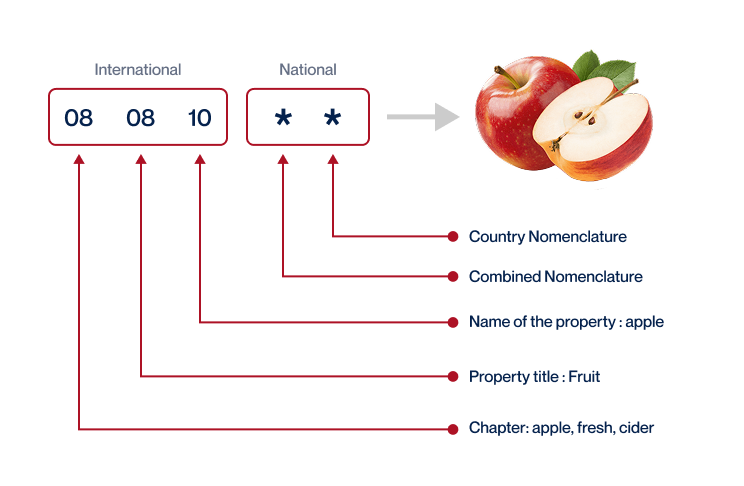
Step 3 – Calculate the Customs Value
Understanding the ‘customs value’ may seem puzzling, especially since it differs from your products’ retail pricing. Here’s the thing: Customs value, often referred to as the ‘CIF’ value, is derived from the total cost involved in getting your goods shipped from Thailand to Bangladesh. This includes the original price of your goods, the cost of international shipping, and the insurance costs.
Let’s consider a scenario. You have a shipment of Thai silk scarves you’ve bought for $5000. Shipping costs are $2000, while your insurance cost is $150. Your customs value becomes $7150 – a significant number when calculating tax and duty on your merchandise. Understanding this is essential to ensure a smooth customs clearance process while avoiding unexpected charges. Keep in mind, accurate calculations in USD are vital to prevent monetary discrepancies and potential delays in your shipments.
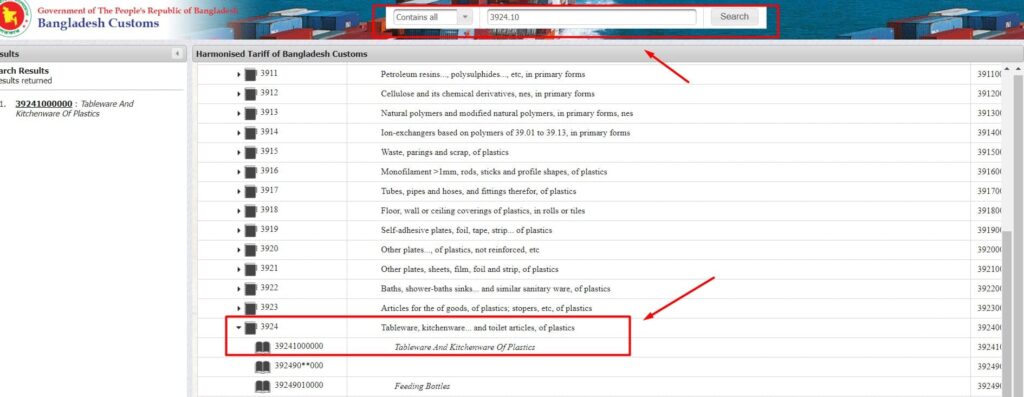
Step 5 – Consider other Import Duties and Taxes
While understanding standard tariff rates is crucial, you should be aware of additional import duties that could impact your operation costs. These are typically contingent on the country of origin and product type.
Take for instance, excise duty – a tax charged on goods produced within the country, which can extend to imported items. Plus, there can be anti-dumping taxes to safeguard against predatory pricing by foreign competitors.
But, the vital one here is Value Added Tax (VAT). In Bangladesh, the standard VAT rate on goods imported from Thailand is 15%. Let’s say you’re importing ceramics worth $2000. Your VAT would be 15% of $2000, which is $300.
Also, consider goods classified under Anti-Dumping Duties.
Example: if you’re importing a special kind of steel (just an example, actual rates may differ), there might be an Anti-Dumping tax of, say, 10% too. That would add further $200, making your total tax $500.
These variables can significantly affect your overall logistics costs. Therefore, it’s crucial to calculate these potential charges before importing. This ensures no surprises and aids in maintaining healthy profit margins.
Step 6 – Calculate the Customs Duties
Calculating customs duties in Bangladesh is a vital step when importing goods from Thailand. It involves several components, including the customs value, VAT, and sometimes anti-dumping taxes and Excise Duty.
Let’s delve into three scenarios. Suppose the Customs Value (CV) of your shipment is $1000 and the customs duty rate (CD) is 15%. In this case with no VAT, the customs duty will be: CD= CVCD = $10000.15 = $150.
For another shipment with the same CV and CD but an added VAT at 15%, the calculation is: CD= CV(CD+VAT)= $1000(0.3)= $300.
Finally, consider a shipment with an anti-dumping tax (ADT) of 10%, Excise Duty (ED) at 5%, and VAT at 15%. Your customs duties would be: CD= CV(CD+VAT+ADT+ED)= $1000(0.45)= $450.
The process might sound daunting, but here’s the good news: You don’t have to go it alone. DocShipper’s customs clearance services will take care of every step, ensure you don’t get charged more, and provide you with a free quote in less than 24 hours. Reach out today to avoid the hassle and keep your focus where it belongs—on your business.
Does DocShipper charge customs fees?
DocShipper, while acting as your customs broker in Thailand and Bangladesh, doesn’t levy any customs duties – these are government charges delivered straight into their coffers! Our fees are for the service of customs clearance, separate and aside from said duties. We also ensure you have all the official documents from customs, proving that you’ve only paid exactly what the government demands, no nasty surprises! Think of us as the middleman who helps smooth the process, not the taxman out for your wallet.
Contact Details for Customs Authorities
Thailand Customs

Official name: Thai Customs Department Official website: www.customs.go.th/
Bangladesh Customs
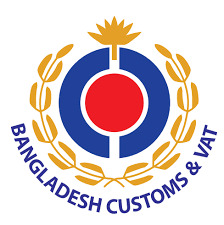
Official name: Bangladesh Customs Official website: customs.gov.bd/
Required documents for customs clearance
Breaking through the jargon of customs clearance can be overwhelming. That’s why we’re here to clear the haze around critical documents like the Bill of Lading, Packing List, Certificate of Origin, and Documents of Conformity (CE standard). Essential guidance ahead!
Bill of Lading
When shipping goods from Thailand to Bangladesh, securing your Bill of Lading (BoL) is crucial. This essential document signifies the transition of ownership, ensuring your shipment’s legal passage. Convenience comes into play with an electronic or telex release, meaning you can bypass the tedious wait for a paper document and speed up the shipping process. If you’re opting for air cargo, you’ll need the AWB (Airway Bill) instead, serving the same function as the BoL, but exclusive to air freight. Remember, always confirm the receipt and accuracy of these documents for smooth customs clearance and avoid any potential mishaps.
Packing List
Navigating international shipping between Thailand and Bangladesh? Don’t overlook the importance of the Packing List. Think of it as your consignment’s passport; without it, your shipment won’t go too far. Responsible shippers pay careful attention to every detail on this list, whether it’s a crate of textiles set for Dhaka or electronic parts headed for Chittagong.
It needs to tally perfectly with the goods in your shipment. Why? Because it’s your vital proof for customs – showing what’s in your shipment, the count, and the weight. Errors can cause delays, extra costs, and even seized cargo. This holds true whether you’re shipping via the bustling ports of Chattogram or airborne, landing at Hazrat Shahjalal International. Perfect your Packing List and you’ll kickstart a smooth shipping experience.
Commercial Invoice
If you’re shipping goods from Thailand to Bangladesh, the Commercial Invoice will be your go-to document. It provides essential details like a description of the goods, quantity, value, and the parties involved. In any customs clearance, it’s pivotal. But there’s more—this document must align perfectly with other documents like the Bill of Lading or Airway Bill. To avoid unnecessary delays, proofread meticulously. George’s Export House, a seasoned shipper, was once delayed for two weeks, simply due to a price discrepancy between these documents. To ace your shipping process, aim for consistency across all records, saving both time and costs.
Certificate of Origin
When shipping from Thailand to Bangladesh, the Certificate of Origin (CoO) is your key to smoother transactions and potentially lower customs duties. It’s proof of where your goods were produced, manufactured, processed, or grown. This seemingly simple form can unlock benefits, such as the Generalised System of Preferences (GSP) scheme, that Bangladesh offers to encourage trade with countries like Thailand.
For example, if you’re exporting Thai silk, by including the CoO in your shipping documents, you can get preferential duty rates, making your products more competitively priced. Remember, ensuring accuracy is paramount here – slight errors can lead to delays, additional duties, or even penalties. So, heed this friendly advice: don’t undervalue the significance of your CoO!
Get Started with Siam Shipping
Prohibited and Restricted items when importing into Bangladesh
Importing into Bangladesh isn’t always straightforward. Facing trouble figuring out what items might end up on the no-fly or strictly regulated lists? We get it. Let’s demystify those often confusing import rules and shed some light on the do’s and don’ts.
Are there any trade agreements between Thailand and Bangladesh
Yes, Thailand and Bangladesh are engaging in significant trading relations, although no official Free Trade Agreement (FTA) or Economic Partnership Agreement (EPA) exists between them. However, both countries are members of the BIMSTEC (Bay of Bengal Initiative for Multi-Sectoral Technical and Economic Cooperation) organization, encouraging trade cooperation among bay countries. Additionally, infrastructural projects, such as the planned Trans-Asian Railway, can foster smoother freight transportation in the future. These ongoing dialogues and infrastructural developments can positively influence your business when shipping goods between these countries.
Thailand – Bangladesh trade and economic relationship
Bangladesh and Thailand have shared an economic and trade relationship rooted in history, marked by key milestones like the establishment of the Joint Trade Committee in 2002. Thailand’s investment in Bangladesh’s booming sectors such as ready-made garments, textiles, and agri-foods has echoed the growing economic rapport between these nations. On the flip side, Bangladesh’s contributions to Thailand’s jute and frozen food industry have firmly positioned itself in Thailand’s international trade portfolio.
In 2022, the bilateral trade volume between the two nations reached an impressive $3 billion, underscoring an upward trend in economic relations. They jointly plan on upscaling this to a $5 billion trade value. This partnership showcases the harmony of trade between two cultures, distinctly intertwined by sectoral investment and rich historical ties.
Your first steps with Siam Shipping
Additional logistics services
Warehousing
Finding the right warehouse in Bangladesh or Thailand can feel like a colossal task. Make sure your goods are in reliable hands, especially when temperature control is critical to maintain product quality. Don’t sweat it - we've got your back. Dive into deeper specifics on our dedicated page: Warehousing.
Packing
When shipping between Thailand and Bangladesh, proper packaging cannot be underestimated. It secures goods from potential damage in transit, particularly for fragile or intricate items like local handicrafts. Thorough repackaging can further ensure the stability within container loads. Partnering with a trusted agent, like our service, can ease these challenges, swapping worry for peace of mind. Are you exporting delicacies or tech equipment? We've got you covered! More info on our dedicated page: Freight packaging.

Transport Insurance
Cargo Insurance is your safeguard against transportation risks, a notch up from your standard fire insurance. Picture handling delicate electronics; an unforeseen storm could lead to water damage. This is where Cargo Insurance shines, covering losses that might not be on your radar. Don't let surprises spoil your shipment - mitigate risks effectively! More info on our dedicated page: Cargo Insurance.
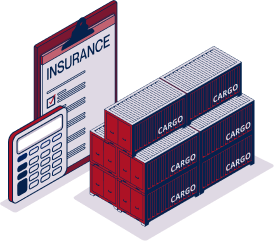
Household goods shipping
When moving personal effects from Thailand to Bangladesh, the prospect of handling fragile or bulky items can be daunting, right? Our team juggles your delicate treasures and oversized pieces with ultimate care. Imagine, your antique Japanese cabinet or a large Thangka artwork transported flawlessly, tenaciously preserving their authenticity. Want to find out how we do this with flexibility? Delve into more details on our dedicated page, Shipping Personal Belongings.
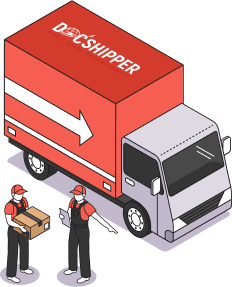
Procurement in Thailand
Want a hand securing the right suppliers in Asia or Eastern Europe? We're experts in that. At DocShipper, we help businesses like yours find trustworthy suppliers and streamline the procurement process. We break down language barriers and guide you every step of the way. Think of us as your knowledgeable guide in the wilderness of international trade. More info on our dedicated page: Sourcing Services.

Quality Control
In the complex world of Thailand-Bangladesh shipping, quality control is your invaluable ally. Fending off nasty manufacturing surprises, it assures your products align with regulations and meet your high standards. Picture this: scrutinizing your automotive parts at a Bangkok factory beforehand, averting import restrictions in Dhaka. More info on our dedicated page: Quality Inspection.

Conformité des produits aux normes
Ensuring your shipment adheres to regulatory standards can feel like a tough labyrinth. That's why our Product Compliance Services step in. We conduct precise laboratory tests to secure necessary certifications, assuring your goods meet destination-country rules. Take, for example, a pharmaceutical distributor. Failing to meet compliance means their product can be denied entry, causing serious disruption and loss. Your business can avoid this by using our services. Dive deeper into Product Compliance Services here.





